Baby Bottles: All About Baby Feeding Bottles
Baby bottles are a New-born essential. Sooner or later they are added to address a baby’s feeding needs. However, choosing the bottle amongst many in the market, is a task. This article takes you through understanding the key factors that must be kept in mind while purchasing baby bottles, along with directions to its use and maintenance. A handy guide to help you with a happy bottle feeding experience.

Baby bottles are an indispensable part of the baby feeding journey. The point of introduction to bottles varies as per one’s necessity. For some, bottles are introduced from day one and for others it might be after a few months. Whether it be formula feeding, feeding of expressed breast milk or water (for babies on solids), the necessity of baby bottles rises. And along with it comes the confusion of choosing the bottles and knowing how to use it the best. Understanding baby bottle feeding through my personal experiences of feeding my son Kabir, I hope to help you solve the dilemma.
Which Bottle Do I Choose?
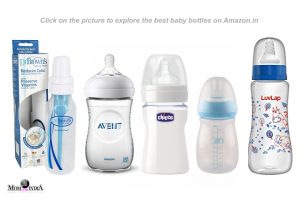 This is the primary doubt that a parent has before introducing the baby to a bottle feed. While breast feeding is a natural process, approaching bottle feeding needs a bit of research. Being an artificial addition to the baby’s needs, a well informed choice makes it easier to introduce it to the baby. I can vouch for Dr. Brown and Philips Avent , as I used them for Kabir.
This is the primary doubt that a parent has before introducing the baby to a bottle feed. While breast feeding is a natural process, approaching bottle feeding needs a bit of research. Being an artificial addition to the baby’s needs, a well informed choice makes it easier to introduce it to the baby. I can vouch for Dr. Brown and Philips Avent , as I used them for Kabir.
The above brands fulfils two important points that ensures baby’s safety- they are Anticolic and BPA free. Anticolic bottles reduce the chance of colic pain in a baby’s tummy. If the nipples of the bottles aren’t well designed, the baby swallows a lot of air during suckling. This in turn forms gas in its tummy. Hence, while purchasing a baby bottle do check whether it is Anticolic.
While glass bottles are the best for a baby, they can be hard to maintain. This makes most parents choose plastic bottles. However, it’s imperative that that plastic bottles are BPA free. BPA is chemical compound, that’s used in the manufacture of plastic. When in contact with food or drink, BPA leaches into it causing a contamination. It’s strongly recommended that babies are given BPA free feeding bottles. No compromises should be made with a baby’s health.
Keeping these two points in mind, do keep the baby’s age in context while choosing a bottle. The nipples or teat of a baby bottle are designed as per age, if a younger baby is given a nipple/teat meant for an older baby, the flow of milk might be too much, causing a choking hazard. Similarly a nipple/teat designed for a younger one will not be adequate for an older baby. Do check the pack of the bottle to know the details of the nipple/teat that it comes with. You might need to purchase additional, age appropriate nipples/teats.
How to use and maintain baby bottles?
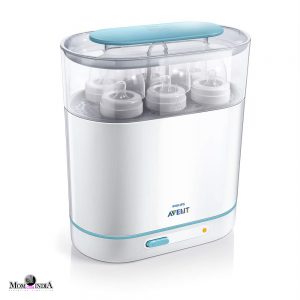 Baby bottles are not just used for formula feeding. As in my case, we began using baby bottles to feed Kabir with expressed breast milk. Choosing to give breast milk via a bottle gave me a lot of flexibility in feeding. Also after a baby starts solids, baby bottles are needed for giving the baby drinking water.
Baby bottles are not just used for formula feeding. As in my case, we began using baby bottles to feed Kabir with expressed breast milk. Choosing to give breast milk via a bottle gave me a lot of flexibility in feeding. Also after a baby starts solids, baby bottles are needed for giving the baby drinking water.
Cleaning and maintaining baby bottles is a must to avoid any infections. After every feed, immediately dispose of any remaining milk in the bottle. Wash it with a baby bottle cleaning liquid and a bottle brush. Do not let a used bottle stay as is, to wash later. This causes the growth of bacteria in a bottle. At least once a day, all the bottles and nipples/teats need to be sterilised. Investing in a bottle steriliser makes life easier. I loved using the Philips bottle steriliser and can strongly recommend it.
Bottles need to be changed every six months to maintain hygiene. Even if there is hardly any wear and tear on it, changing bottles is imperative. The same routine needs to be continued for the feeding nipples- wash, sterilise and change. If you are using a steriliser, the nipples can be used maximum for 3 months. In case of traditional sterilising by boiling, the nipples need to be changed every 2 months. Cracked or discoloured nipples should be immediately disposed-of.
When and How to introduce a bottle?
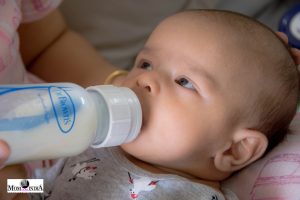 This is as per personal preference or necessity. However, the earlier a bottle is introduced to a baby, the lesser the chance of the baby rejecting it. Nipple confusion is rare and can be avoided by choosing the right bottle for the baby. Both Dr Brown and Philips Avent, are designed to mimic the feel of a mother’s nipple.
This is as per personal preference or necessity. However, the earlier a bottle is introduced to a baby, the lesser the chance of the baby rejecting it. Nipple confusion is rare and can be avoided by choosing the right bottle for the baby. Both Dr Brown and Philips Avent, are designed to mimic the feel of a mother’s nipple.
In the case that the baby rejects a bottle, dealing it with patience and trying again another day, would yield results. It is best to try and introduce the bottle in a night feed. Since the baby is sleepy then, it has least reservations towards trying something new. Do maintain an angle of 30 degrees for the bottle. This ensures the right amount of milk flow for the baby. The temperature of milk too needs to be just right. Like breast milk, the milk should be at room temperature. A baby will reject hot or cold milk. Do check the temperature of the milk at the back of your hand, before giving it to the baby. Also turn the bottle upside down to ensure the bottle nipple is unclogged. A clogged nipple will affect the flow of milk, irritating a baby and disrupting the feed.
A well fed baby is a happy baby. I hope this helps you to have fruitful feeding experiences. If there are any doubts that I haven’t addressed above, feel free to reach out to me. Your feedbacks and comments help in advancing my endeavour ,of a building a community for parents and caregivers. The above content is also available in a video format (link). Enjoy simplified parenting.
♥♥इस आर्टिकल में बच्चों की बोतल से जुड़ी कई बातों के बारे में बताया गया है | इस आर्टिकल की जानकारी हिंदी में पाने के लिए नीचे दिए वीडियो को देखें ►








 Share
Share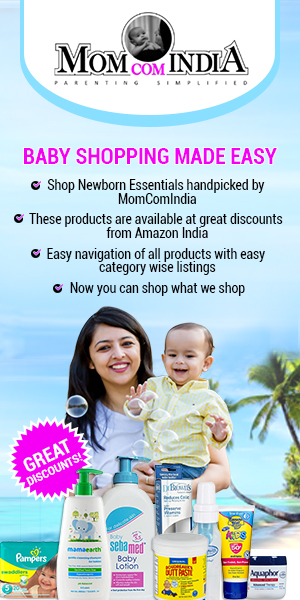
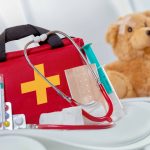
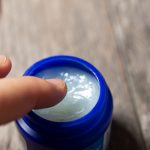

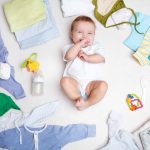


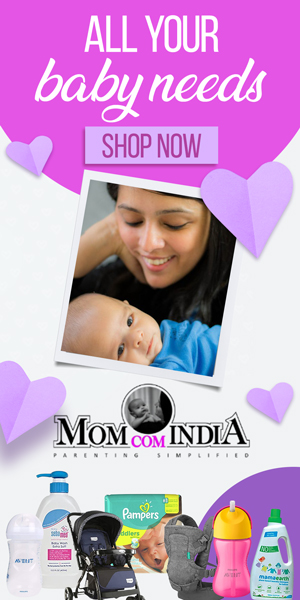
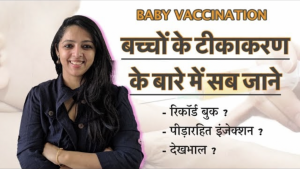




COMMENTS